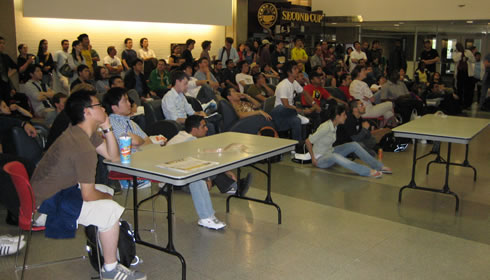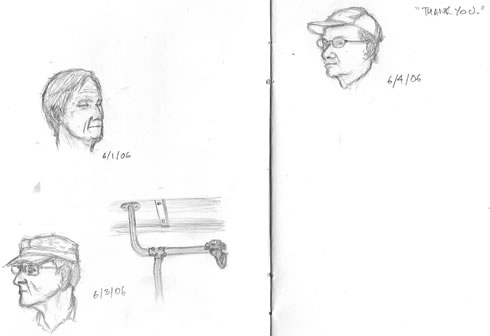Malcolm X Novel Graphic
![]() I’ve just received a publicity package from Farrar, Straus & Giroux Publishers in the States. Their Hill and Wang imprint is wrapping up production of three comic novels: a biography of Malcolm X, a biography of Ronald Reagan, and a comic adaptation of the 9/11 Report.
I’ve just received a publicity package from Farrar, Straus & Giroux Publishers in the States. Their Hill and Wang imprint is wrapping up production of three comic novels: a biography of Malcolm X, a biography of Ronald Reagan, and a comic adaptation of the 9/11 Report.
They call them “novel graphics” as opposed to “graphic novels” (er…). I’ve only received the first six pages of the Malcolm X comic novel (in addition to the first six pages of the Reagan biography and the first several pages of the 9/11 Report), but I’m already beginning to see some problems.
For instance, Thomas Leben, publisher at Hill and Wang, lauds the ability of the comics medium to convey profound messages simply: “… the third page in Randy Duburke’s graphic biography of Malcolm X […] captures the entire arc of slavery, emancipation, and Jim Crow that set the stage for Malcolm Little’s life.”
Comics is a fantastic medium, yes, but that doesn’t mean that it can do justice to phenomena as complex and deeply rooted as slavery in a single panel. (Okay, this is complicated, but it actually can. It really depends on the size of the panel, the way elements are represented, and how subject matters are treated therein. Needless to say it’s a very difficult thing to do, and despite the fact that Duburke is a remarkably talented artist, he doesn’t — can’t — pull it off in a panel the size of an average two- or three-panel comic strip. This doesn’t mean that a three-panel comic strip can’t deal with complex issues, Charles Schulz and Bill Watterson show, very finely, that they can. But they never tried to canvass slavery, emancipation, and Jim Crow in a single page — and for good reason.)
The issue, here, isn’t the comics adaptation. I think any subject — bar none — can be presented more than adequately by the comics form. The problem is the content.
The Malcolm X biography is written by Andrew Helfer, the same guy who wrote the script for the comic biography of Ronald Reagan. It’s hard to think of two more, well, opposite public figures. If I were going to write a biography of Reagan, it wouldn’t be flattering. If I were to write a biography of Malcolm, it wouldn’t be simplified.
There are other problems with the first few pages (especially with respect to details of Malcolm’s life, and, particularly, his demise). The promotional package, for instance, remarks that Malcolm’s “words inspired generations of African Americans — and played a role in his violent death.” What, exactly, does that mean? Yes, that’s right, Malcolm preached violence, and hence that violence came to reclaim him — he got what he deserved, that scary, even respectable, but nevertheless shit-disturbing nigger. If this biography doesn’t mention, at the very least, Malcolm’s own doubts about the NOI’s involvement in his impending death, then there are problems.
Having said that, I can’t prematurely judge the final product until I’ve read the entire, 100 page graphic novel. Which should be coming out sometime in November. (The 9/11 Report adaptation will be coming out in September, five years anniversary edition.) Then I can offer a proper review.
In the meanwhile, here’s an article on the three “novel graphics” from Publisher’s Weekly, it has the first page of the 9/11 Report adaptation.



